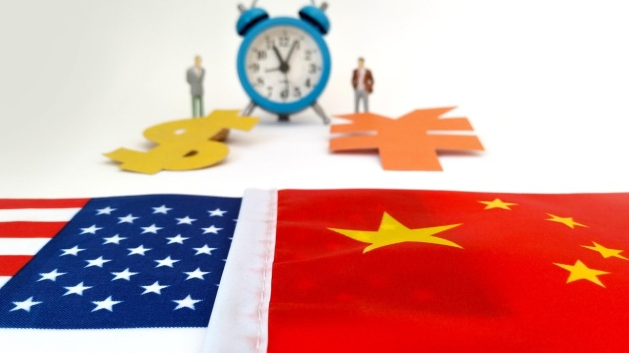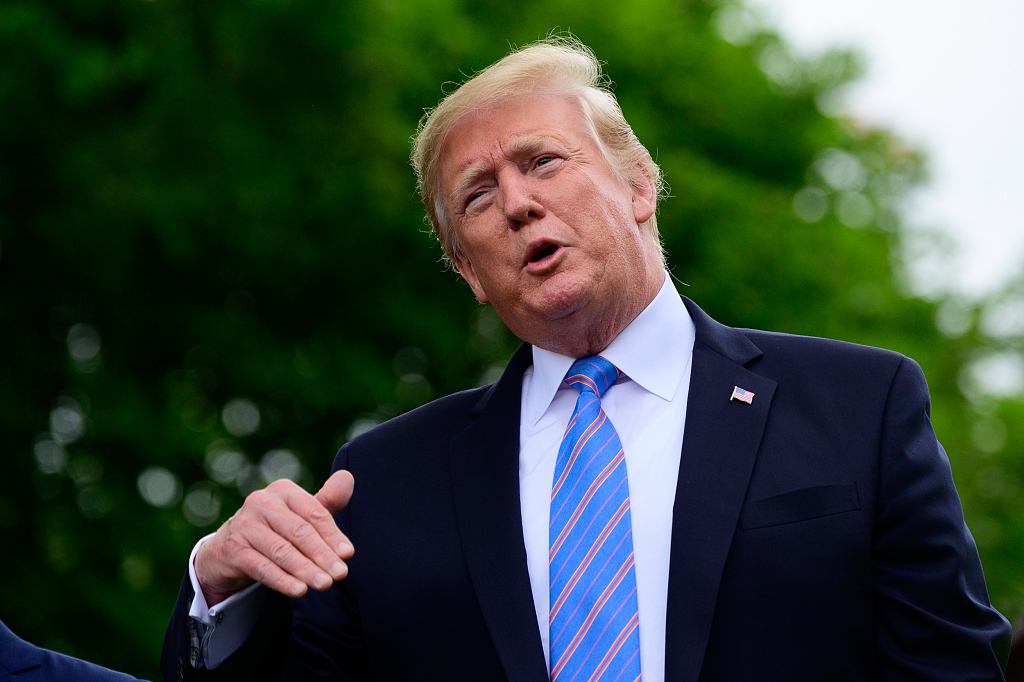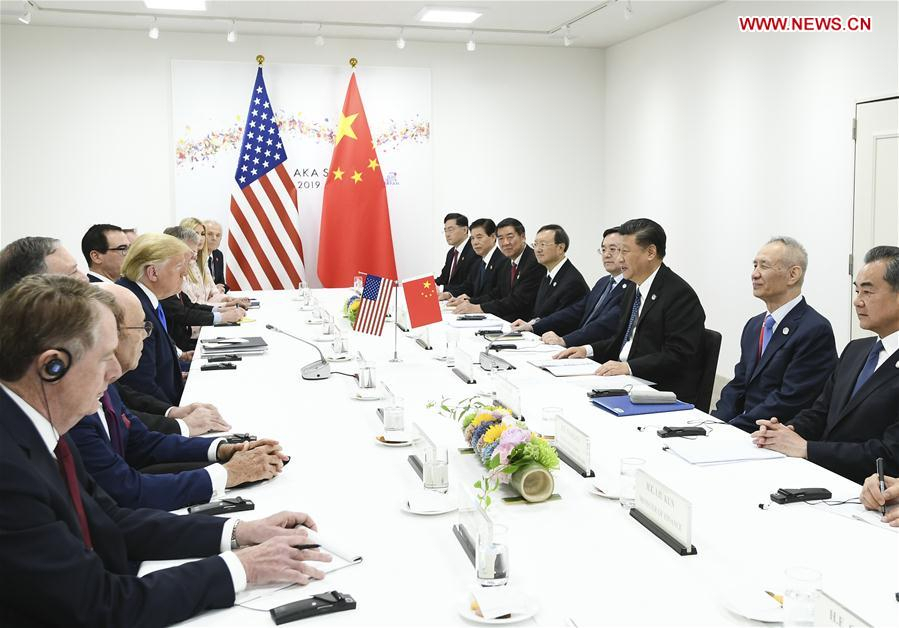

Editor's note: Azhar Azam works in a private organization as a market & business analyst and writes about geopolitical issues and regional conflicts. The article reflects the author's opinions, and not necessarily the views of CGTN.
War does not distinguish between friends and foes and elicits unequivocal losses to everyone irrespective of status and nationality.
A trade war is no different. The China-U.S. trade scuffle of more than one year has partly sparked the U.S. federal budget deficit to extend to 1 trillion U.S. dollars in the first 11 months of the fiscal year – up by 18.8 percent compared to the same period last year.
The Trump administration could cheer about the narrowing goods trade deficit with China from 235 billion to 209 billion U.S. dollars for the seven-month period of January to July; however, the U.S. overall goods trade deficit has wheeled from 501 billion to 513 billion U.S. dollars for the same period and even wider from 2017’s 464 billion U.S. dollars, based on data from the U.S. Census Bureau.
Given that Trump directed 28 billion U.S. dollars in aid to the U.S. farmers hurt by the trade war, the declining trade deficit with China he boasted about was effectively neutralized merely by the damage caused to the U.S. farmers in an itching trade war.
While Chinese exports to the world (-1.0 percent) remained roughly unchanged during January-August and it also counterbalanced its trade deficit by managing its imports (-5.6 percent) – the U.S. effort to crash the Chinese economy fired back.
At the same time, although China’s customs data showed that Chinese goods exports to the U.S. plunged 8.9 percent to 276 billion U.S. dollars, its imports from the U.S. dropped about three times more than the decline in exports to the U.S. – 27.5 percent to just over 80 billion U.S. dollars.

U.S. President Donald Trump speaks at the White House during an event in Washington, D.C., the U.S., June 10, 2019. /VCG Photo
The official data from both sides support the notion that the Trump-waged trade war has triggered more harm to the U.S. economy than that of the Chinese. So, there is an urgent need from China and the U.S. to take drastic measures to turn the tide before it brutishly jolts the two economies and the global trading system.
While Beijing repeatedly called for bilateral negotiations to end the trade war – U.S. President Trump, as a gesture of good will, delayed the imposition of 5 percent additional tariffs (from 25 percent to 30 percent) on 250 billion U.S. dollars' worth of Chinese goods for two weeks from October 1 to October 15.
China responded eagerly as the Chinese Customs Tariff Commission of the State Council has reportedly decided to exclude some U.S. agricultural products, including soybeans, from the additional tariffs.
In July, China had offered to five free private crushers from import tariffs on U.S. soybeans arriving by the end of 2019.
Chinese assuaging decision to shelve the additional tariffs gave a tremendous respite to the American farmers who had been crammed into the prolonged trade war. The lull in China-U.S. trade fray exited American agricultural producers and Chinese importers of U.S. farm produce.
On September 12, Beijing’s conciliatory move stirred Chinese firms to buy at least 10 boatloads or more than 600,000 tons of U.S. soybeans, the largest in over a year. The record purchases also backed Beijing’s prior claim that Chinese companies have been inquiring about the U.S. agriculture products.

Chinese President Xi Jinping meets with U.S. President Donald Trump in Osaka, Japan, June 29, 2019. /Xinhua Photo
Trump is ecstatic. “It is expected that China will be buying large amounts of our agricultural products!” the U.S. president said in his tweet. Earlier in his media talk at the Oval Office, he struck an optimistic tone about trade talks with China. “They made a couple of moves (about tariff waivers) last night that were pretty good.”
The affable signals from Beijing are set to roll a favorable pitch for the forthcoming 13th round of high-level economic and trade talks between the two largest economies of the world early next month in Washington.
As the downturn in the manufacturing sector has threatened the U.S. economy, which contracted for the first time in three years in August, the de-escalation in trade war would definitely ease the worries of the U.S. business people who have been hovering around the uncertainty of sustainable trade ties between Beijing and Washington.
On China’s side, it has always opposed the idea of trade war, and, since the start of the trade war, has been calling for a calm attitude to defuse the hostile situation. Beijing believes that the growing bilateral frictions between China and the U.S. will eventually slow down the global economy, which after all is the linchpin of sustainable economic growth for both countries.
The International Monetary Fund (IMF), the global financial watchdog, has once again warned that the retaliatory tariffs could trim the worldwide economic growth by 0.8 percent in 2020 and would prompt many losses in coming years including the core manufacturing industry.
While a decline in the global economic growth would mean less global economic activity, the tremors would be felt by the people across the world including China and the U.S. Only a coherent and heedful approach from both sides could foil such a despairing condition from prevailing and the two countries are moving on the right track to protect the bilateral trade interests.
(If you want to contribute and have specific expertise, please contact us at opinions@cgtn.com.)

Copyright © 2018 CGTN. Beijing ICP prepared NO.16065310-3
Copyright © 2018 CGTN. Beijing ICP prepared NO.16065310-3